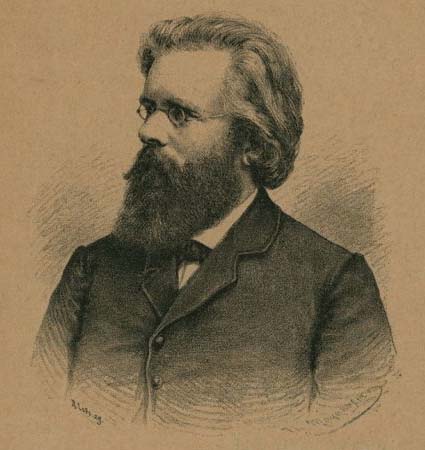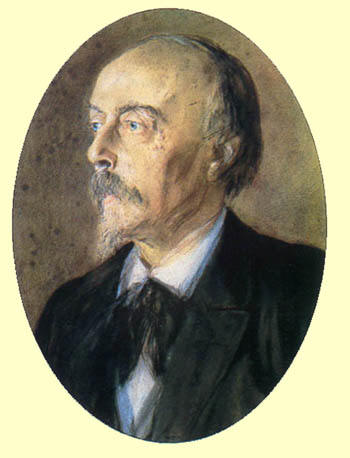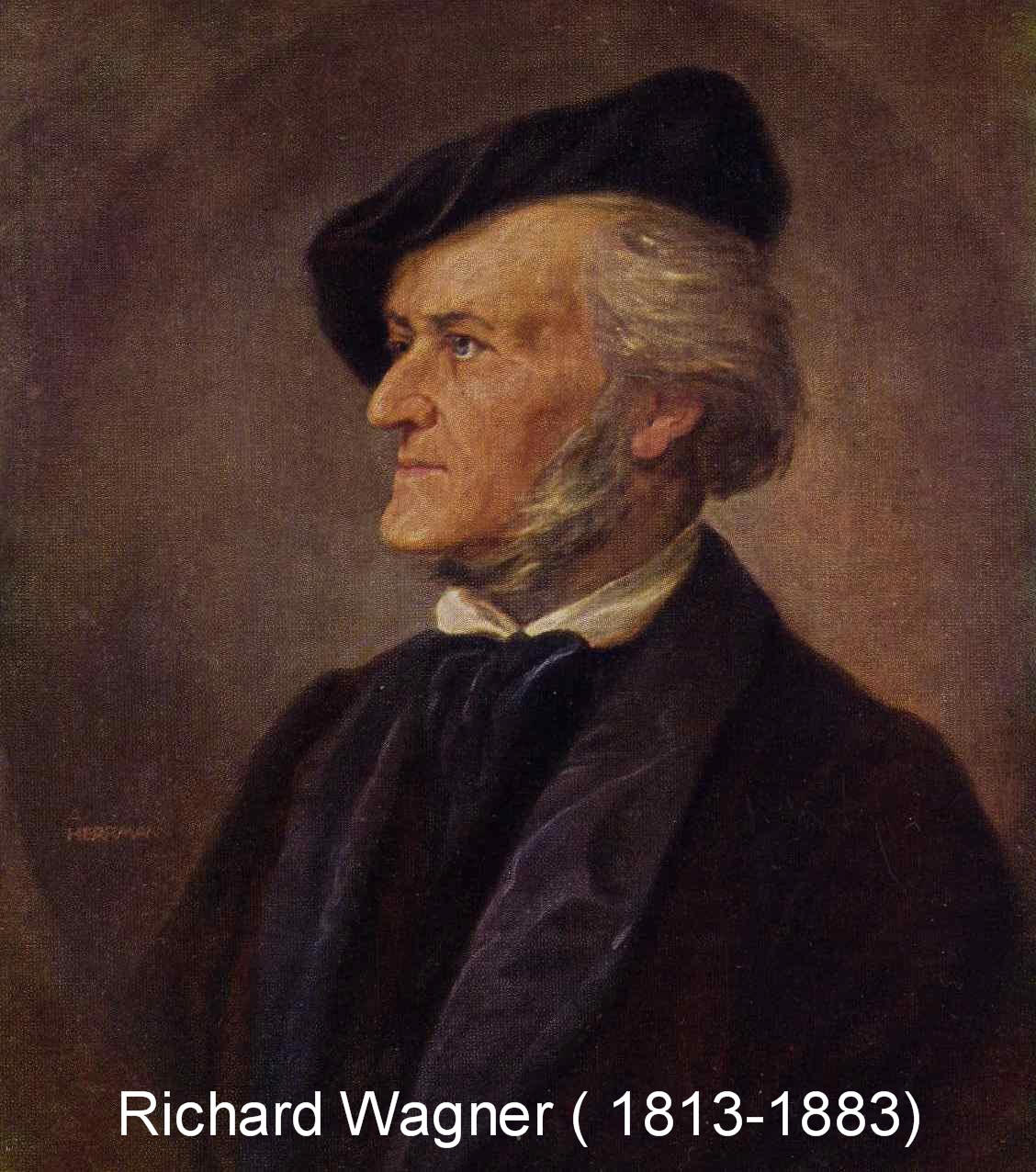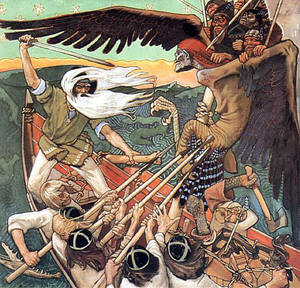On the evening of their arrival in Berlin, Söderhjelm brought Sibelius
to the Kroll Oper, where they saw Don Giovanni with the great
Portuguese baritone Francisco d’Andrade (1859-1921) in the title
role, who was making his debut in the German capital that same year1:
this first contact with one of Mozart’s operas opened unsuspected
horizons for Jean. He hurried to to inform Christian, who the 18
September replied asking him if the opera was as really beautiful as
imagined. His letter of the 2 October to Uncle Pehr showed him
already confronted with difficulties of an artist from a country
considered strange in a great cosmopolitan metropolis: ‘I have
almost become a real Berliner, though without drinking beer. The
doctors have forbidden it. There is very much to see and hear, and
it will be even better when the season starts. My composition
teacher Professor Albert Becker, earns 100 roubles a day and has the
air of a composer of days gone by. I have not really understood
his method. I am deep in the study of fugues, and will soon start the
violin. Last summer I was a great success as soloist both at Lovisa
and at Lahis. Here in Germany they really know how to put you
down. The only reply is to do the same to them. Believe me it is
difficult to be the advocate of a country as little known as Finland.
There are many Finns here. People here greatly admire composers.’
 Albert Becker
Albert Becker
Having
lost his ‘favorite student’ Wegelius felt empty, it was as if
Sibelius had taken ‘half of the Institute’ with him in his bags. Hardly arrived in Berlin, Jean had to
spend a few days in hospital. The 29 September, he sent the first
report of his activities to Wegelius: ‘Becker is a real wig from
head to foot. In looking at my quartet, he almost had
an attack (he is totally lost by the way I use alternating major and
minor forms in the same triad). He just glanced over my music, sung
the second theme of the finale (he is incapable of playing it) and
pretends, not be able to grasp it, that I wrote it by calculation.
He was above all shocked by [a wrong relation, but] should listen to
how this phrase sounds an octave lower. He has started to teach
me to a maximum in strict style, no doubt he has nothing to say, but
it is very fastidious. Becker is very rigid in his attitude
towards me, but with time he will surely soften up.’ These
criticisms as regards a teacher that he himself had chosen annoyed
Wegelius: ‘Mon Cher Jean [in French]! The composer of the mass in B
flat minor [opus 16, 1878] and the [oratorio] Die Wallfahrt nach
Keevaler (The Pilgrimage to Keevaler) is not “a wig from head to
foot”. Get this idea out of your head!’ (4 October). In spite of
receiving the second prize from the Society of the Friends of Music
in Vienna for his symphony n°2 in G minor, Becker was above all
known for his religious works. The German Emperor Wilhelm II, an
enemy of modern music, very much appreciated him and to keep him in
his entourage, he prevented him from accepting the position as
cantor at Saint Thomas of Leipzig. In 1891, he appointed him
Director of the Königlicher Domchor (Royal Cathedral Choir) in
Berlin: a position once held by Mendelssohn, which Becker was to
hold until the end of his life eight years later. His motto, which
he never ceased to repeat to his students, was: Lieber langweilig
aber in Stil (Be bored if you wish, but in style).
 Becker,
who enjoyed the merited reputation of a professor of counterpoint,
and with who Sibelius studied in private, considered that with
Wegelius, his new student had wasted his time, a judgement that
Jean, his self-esteem hurt, and who had in reality benefited from a
solid training in Helsinki, kept prudently to himself. The 6
November he wrote to Wegelius: ‘Becker does not want to speak of
anything but his fugues. To be limited to such things is really
boring. I now know the German Psalter from beginning to end and vice
versa. You asked me what I am working on and would like to see my
finished exercises. In my opinion not of much interest. As
everything is forbidden, what can I write? I have analysed several
Bach fugues (and even some of Becker’s in person) as well as some
Bach motets. I am now going to write instrumental fugues. I
have learnt to never argue with Becker, not to show my feelings
[and] never plead the cause of my idiocies.’ From this period a
piece for four real voices, written by Sibelius has survived, with Beckers corrections of the words Mein Gott, Mein Heiland, ich
schrie Tag und Nacht vor dir (My God, my Saviour, I cry night and
day before You).
Becker,
who enjoyed the merited reputation of a professor of counterpoint,
and with who Sibelius studied in private, considered that with
Wegelius, his new student had wasted his time, a judgement that
Jean, his self-esteem hurt, and who had in reality benefited from a
solid training in Helsinki, kept prudently to himself. The 6
November he wrote to Wegelius: ‘Becker does not want to speak of
anything but his fugues. To be limited to such things is really
boring. I now know the German Psalter from beginning to end and vice
versa. You asked me what I am working on and would like to see my
finished exercises. In my opinion not of much interest. As
everything is forbidden, what can I write? I have analysed several
Bach fugues (and even some of Becker’s in person) as well as some
Bach motets. I am now going to write instrumental fugues. I
have learnt to never argue with Becker, not to show my feelings
[and] never plead the cause of my idiocies.’ From this period a
piece for four real voices, written by Sibelius has survived, with Beckers corrections of the words Mein Gott, Mein Heiland, ich
schrie Tag und Nacht vor dir (My God, my Saviour, I cry night and
day before You).
Ferruchio Tammaro noted that at this rhythm Sibelius
would have become another Max Reger. In spite of his doubts Becker’s
lessons were finally very useful and the fact that in Berlin, he was
simply a student amongst others, and not the future hope of the young
Finnish music. His incertitude was witnessed by these words noted
by by him the 14 October 1889 on the back of a receipt from his
teacher: ‘Try to be a man and always remember your own
responsibilities. Do not give in to feelings, but harmoniously
develop your gifts. Do not imagine being anything other than what
you are. Do not dream of becoming a celebrity. Work intelligently.
Si mal nunc et [!] olim sic erit.’ Becker finally thanked
Wegelius for having sent him den lieben jungen Mann (the charming
young man), adding: Er interessant mich sehr und ist entscheiden
begabt (He interests me very much and is decidedly very gifted).
Berlin, a
musical metropolis
Musical
life in Berlin offered captivating compensations. There were no
leading composers resident in the city, but the number of artistic
events were many and of a high quality, notably philharmonic
concerts directed by Hans von Bülow (1930-1894). It was in this
context on the 31 January 1890, shortly after its creation in Weimar
(11 November 1889), Sibelius attended a performance of Don Juan,
the work with which Richard Strauss made his shattering entry into
‘modernity’. After the performance, he told Ekman, ‘a timid young
man with a head of long hair mounted the stage to in response to the
applause. His reaction can only be imagined to this composer only
eighteen months older than him, but already in full glory and
capable of leading the orchestra with such virtuosity and stupefying
mastery. In the same programme was the overture of Deux Journées
by Cherubini, the symphony in E flat major N°99 of Haydn, the finale
of which was given an encore, and the prelude to Wagner’s
Lohengren. A few days later, during a popular
concert of the Philharmonic, Strauss himself directed Don Juan
with greater flexibility in the tempos and with more clarity in his
sonorities than Bülow: at least this was the opinion of the editor
of the Allgemeine Musik-Zeitung, Otto Lessman (1844-1918),
later a great defender Sibelius in the German capital. ‘Bülow really
understands nothing of poetic music, he has lost the hang of it! Thank God, yesterday evening gave me the satisfaction of presenting
my work as it should be to the Berlin public. […] I conducted the
symphony a good third faster’ (Strauss to his parents, 5 February).
 In
October 1889, Sibelius attended a performance of Dvorak’s symphony
in D minor in the presence of the composer himself, Brahm’s violin
concerto, as well as two overtures: La Belle Mélusine by
Mendelssohn and Beethoven’s Leonore III. Previously he had
for the first time seen Wagner’s Tannhäuser and The Master
Singers, and wrote of it to Wegelius the 29 September, taking
care not to hurt the feelings of this enthusiastic partisan of the
Bayreuth musician: ‘It is indisputably very powerful. When we see
each other again I will tell you about my reactions in more detail,
and will tell you what I felt. This music was a mixture surprise
deception and pleasure, etc. for me. I was ill both evenings, but be
assured I will never forget them.’ In a new letter to Wegelius (6
November), he declared that the overture of Fées was nothing
other than an imitation of Weber, but to Aunt Evelina, he wrote that
he had been ‘astounded’ by Wagner. At the same concert as the
overture of the Fées, he had been able to listen to a psalm of
Liszt’s and two ‘marvellous pieces’ by Berloiz (two extracts from
Lelio). In the correspondence of Sibelius there is no mention of
Verdi’s Othello, the Berlin premier had taken place 1
February 1890, or Wagner’s Ring, which was performed in its
entirety in the autumn of 1889.
In
October 1889, Sibelius attended a performance of Dvorak’s symphony
in D minor in the presence of the composer himself, Brahm’s violin
concerto, as well as two overtures: La Belle Mélusine by
Mendelssohn and Beethoven’s Leonore III. Previously he had
for the first time seen Wagner’s Tannhäuser and The Master
Singers, and wrote of it to Wegelius the 29 September, taking
care not to hurt the feelings of this enthusiastic partisan of the
Bayreuth musician: ‘It is indisputably very powerful. When we see
each other again I will tell you about my reactions in more detail,
and will tell you what I felt. This music was a mixture surprise
deception and pleasure, etc. for me. I was ill both evenings, but be
assured I will never forget them.’ In a new letter to Wegelius (6
November), he declared that the overture of Fées was nothing
other than an imitation of Weber, but to Aunt Evelina, he wrote that
he had been ‘astounded’ by Wagner. At the same concert as the
overture of the Fées, he had been able to listen to a psalm of
Liszt’s and two ‘marvellous pieces’ by Berloiz (two extracts from
Lelio). In the correspondence of Sibelius there is no mention of
Verdi’s Othello, the Berlin premier had taken place 1
February 1890, or Wagner’s Ring, which was performed in its
entirety in the autumn of 1889.
His
principal revelation in Berlin was Beethoven. Bülow opened the
autumn season with Eroica (14 October 1889), and ended it
with The Ruins of Athens and the Ninth (16 December),
and then inaugurated the spring season with the Fifth (13
January 1890). Sibelius used the occasion to copiously take notes on
his pocket score. In addition, Bülow performed several sonatas at
the piano, the last five. Sibelius very
much appreciated, and carefully studied Bülow’s editorial
commentaries on these works. He also attended the concerts of the
Joachim Quartet, and the opus N°59 in F major inspired him to make
this curious commentary: ‘When to start the adagio, I imagine myself
on a swing in the moonlight. To the left a wall, on the other side a
marvellous garden with birds of paradise, shells and palms, etc.
Everything was dead and still, the shadows grew long and the odour
of an old library floated by. Nothing else but sighs could be
heard. It was Beethoven who sighed, zand when the theme in F major
appeared for the second time, he sighed even deeper. After a moment,
everything changed into large lakes of red water over which God
played the violin. Little by little I realised that is was Joachim
and his bow, De Ahma [the second violin] and the others appeared,
and finally myself J Sibelius.’
 As a
result of the popular concerts of the Berlin Philharmonic Orchestra
could at last deepen his relations with Kajanus. The 11 February
1890, Kajanus conducted his symphonic poem Aino. Otto
Lessmann estimated the he he had transposed a very poetic and easily
understood subject into music in a very masterful fashion: the
suicide by drowning of the young and beautiful Aino trying to escape
the desires of the old Väinämoinen. Sibelius
later declared that he had been only been moderately impressed by
this piece of fifteen minutes long, strongly influenced by Wagner
and without doubt he had first learned of in Helsinki: Kajanus had
performed it the 7 March 1885, then again the 16 April 1886 and the
25 April 1889. It remains that this experience in Berlin was
partially at the origin of his own Kullervo, commenced in Vienna the
following year: Aino was inspired by the Kalevala and put the
words in Finnish into music: it is true they were anonymous words,
not from the Kalevala, but to the glory of the kantele. Sibelius
explained to Ekman: ‘The knowledge of this work was of an extreme
important to me. It opened my eyes to the marvellous possibility
offered to musical expression by the Kalevala, whilst the previous
attempts to interpret the national epic into music did not turn out
to be very stimulating. After having heard Kajanus’ Aino,
the idea of creating myself a work on a subject drawn from our own
national epic occupied more and more my imagination.’
As a
result of the popular concerts of the Berlin Philharmonic Orchestra
could at last deepen his relations with Kajanus. The 11 February
1890, Kajanus conducted his symphonic poem Aino. Otto
Lessmann estimated the he he had transposed a very poetic and easily
understood subject into music in a very masterful fashion: the
suicide by drowning of the young and beautiful Aino trying to escape
the desires of the old Väinämoinen. Sibelius
later declared that he had been only been moderately impressed by
this piece of fifteen minutes long, strongly influenced by Wagner
and without doubt he had first learned of in Helsinki: Kajanus had
performed it the 7 March 1885, then again the 16 April 1886 and the
25 April 1889. It remains that this experience in Berlin was
partially at the origin of his own Kullervo, commenced in Vienna the
following year: Aino was inspired by the Kalevala and put the
words in Finnish into music: it is true they were anonymous words,
not from the Kalevala, but to the glory of the kantele. Sibelius
explained to Ekman: ‘The knowledge of this work was of an extreme
important to me. It opened my eyes to the marvellous possibility
offered to musical expression by the Kalevala, whilst the previous
attempts to interpret the national epic into music did not turn out
to be very stimulating. After having heard Kajanus’ Aino,
the idea of creating myself a work on a subject drawn from our own
national epic occupied more and more my imagination.’
In
October 1889, Wegelius had had performed during the one hundredth
concert of the Institute two movements of the quartet in A minor.
The 1 December, during a brief journey overseas, he made a detour to
Berlin to meet Sibelius. He estimated with optimism that his protégé
‘had mastered vocal polyphony with success and continued with
enthusiasm and energy his musical and artistic training’, which led
him, in March 1890, to ask him to send a choral piece for one of the
concerts of the Institute. Sibelius however showed a taste
for luxury that scandalised his friends. In a letter to Wegelius
dated 29 September 1889, he went as far as asking the Governor
General of Finland to obtain for him, as the beneficiary of a state
grant, free tickets for the Berlin Opera! Undignified, Wegelius
replied the 4 October: ‘There is no reason that you do not content
yourself with the seats that other musicians of your age are only
too happy to occupy. For 1.50 [Marks], you would surely have a seat
where you can see and hear.’ From Werner Söderhjelm, who observed him
closely, Jean received the same day and for the same reasons, a
severe reprimand.
In
Helsinki, Christian was worried. Contrary to his eldest brother who
he admired enormously and to whom he was entirely devoted, he had
his feet well on the ground. After having been received by the
Lerches, the 7 September 1889, he wrote very lucidly: ‘When you are
your brother, you are treated royally.’ At the same time he offered
many pieces of advice to his brother on the best way to manage a
budget, notably remarking that many Finnish students living in
Berlin spent less than in Helsinki. He did not miss the opportunity
to remind him – after the sale, to provide Jean’s needs, of certain
of his own clothes – that in order to obtain a new grant for the
following year, he absolutely had to present his candidature and
fill in the necessary forms. Between November 1888 and March 1889,
to cover the expenses of Sibelius, his family borrowed about 2,000
Finnish Marks, or the equivalent of the grant provided by the Senate
for his sojourn in Berlin. In April, mostly due to the praiseworthy
certificate attributed by Becker, Jean was given a university grant
of 1,200 Marks to complete the year, but his financial problems were
not however settled. This led Christian to comment the 2 May: ‘If
you think about it, you will see that during these last two months,
you have not raised the least question of money, so we know nothing
about what you are doing or hearing and how you are taking advantage
of life.’
One way
of taking advantage of life was to mix with the many foreign groups
of musicians and artists in Berlin. Other than two Americans, the
cellist Paul Morgan and the violinist and conductor Theodore
Spiering (1871-1925), later violin soloist of the New York
Philharmonic Orchestra conducted by Mahler, the circle into which
Sibelius was introduced to was mostly composed of Scandinavians.
These included two Danes, the violinist and composer Fini Henriques
(1867-1940), student of Joachim and ‘bohemian amongst bohemians’,
and the violinist Fredrik Schnedler-Petersen (1867-1938), who was
also a student of Joachim and later became orchestra leader in Turku
then the Copenhagen Tivoli Concert Hall. There were also three
Norwegians: the writer Gabriel Finn, the pianist, Alf Klingenberg
(1967-1944), who admitted spending more time flirting than on
musical scales, and above all the composer Christian Sinding
(1856-1941), the eldest amongst them. Sinding was in fact living in
Leipzig, but often came to Berlin with his violinist Ottakar Novacek
(1866-1900), student of the great Adolf Brodsky (1851-1929). When he
joined the group, Adolf Paul – who had completed his metamorphosis
from pianist to writer – arrived penniless from Weimar. On Sundays
they went in a procession goose stepping to the along the
Berlinerstrasse to a place called Augustinerbräu, where the others
forewarned by the noise started to shout: Die Schweden kommen!
(The Swedes are coming) They were accompanied by young women who, to
believe Adolf Paul, studied the musicians with more assiduity than
the music.